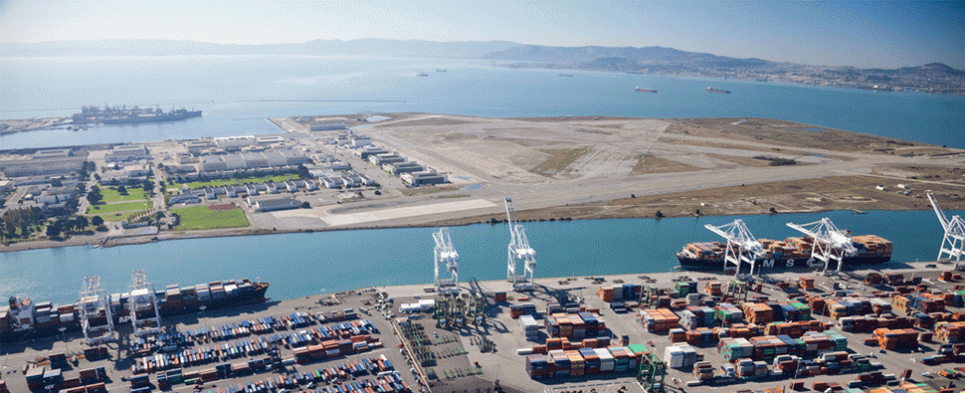U.S. West Coast Port Labor Dispute Resolved!
After nine months of heated labor-contract negotiations, the Pacific Maritime Association (PMA) and the International Longshore and Warehouse Union (ILWU) have reportedly come to an agreement—the first step in clearing a long-jam of cargo that has virtually paralyzed 29 U.S. West Coast ports from Seattle to San Diego.
“This is great news,” says Jonathan Gold, vice president of Supply Chain and Customs Policy at the National Retail Federation (NRF) in Washington, D.C. Last fall, the NRF, the nation’s largest retail industry group, and the National Association of Manufacturers formed a consortium of more than 160 industry and trade groups to spearhead an effort to urge the PMA and the ILWU to reach a contract agreement.
Applauding the new contract, Gold voices a cautionary note, telling Global Trade that a new contract is “just the first step” in a series of solutions needed to solve the chronic congestion and infrastructural issues that have slowed the movement of container cargo through some of the nation’s busiest ports.
“It’s going to take from 45 to 60 days, perhaps even longer, to clear the back-log of cargo,” says Gold. “Whichever the case, it will take months and months for retailers and supply-chain stakeholders across the country to recover.”
The most obvious result, says the NRF’s Gold, is the probable reconfiguration of the transpacific supply chain that would shift the flow of cargo that’s routinely moved through the U.S. West Coast northward to Vancouver, British Columbia, or to ports along the U.S. Gulf and East Coasts via the Panama Canal.
Even then, Gold says, defining a worst case scenario, “It’s critical to know if the ILWU and ILA (the labor union representing dockworkers at ports on the Great Lakes and the U.S. East and Gulf Coasts) contracts will run concurrently because a future work stoppage that could impact virtually all of the nation’s ocean trade would be catastrophic. … A lot of work still needs to be done and this sort of thing can’t be allowed to happen again.”
The cost of the labor dispute and the cargo congestion, particularly at the ports of Los Angeles and Long Beach—the nation’s two busiest container ports—has amounted to an estimated $2 billion per day with the value of cargo moving through U.S. West Coast ports equal to approximately 13 percent of GDP.
Over the past months, the impact of the dock situation rippled through the U.S. economy with companies such as Japan’s Honda Motor Co. slowing production for a week at three North American plants due to delays in parts shipments from Asia, while several other automakers say they switched to higher-cost air freight to minimize slowdowns. Agricultural exporters and importers of perishable foodstuffs took a particularly heavy hit, while shipments of apparel, machine parts and electronics were also affected.
At Los Angeles and Long Beach, more than 35 ships are currently lying at anchor awaiting a berth to unload. Yesterday, 12 ships were left unloaded at the Port of Oakland, which was shut-down entirely when dockworkers took the day off to attend an ILWU “stop-work meeting.” In the past, such meetings have been held at night.
Containerships operate along the world’s trade routes on strict schedules with the least amount of time possible spent in port to load or unload cargo. According to sources in the maritime industry, a ship lying at anchor or idled at a terminal waiting to be worked can cost upwards of $45,000 a day to maintain.
A conservative estimate of each waiting vessel having a capacity of 8,000 TEUs (20-foot containers) would put upwards of 280,000 ‘cans’ filled with consumer goods, computer components, apparel and a thousand other types of products sitting off Los Angeles and Long Beach alone waiting to be moved.
“That’s a backlog of cargo that isn’t going to be moved quickly,” says Larry Gross, senior consultant with transportation consultancy FTR in Bloomington, Indiana. “A lot of work will need to be done to work that volume down and that’s going to take a lot of time.” In the short- and medium-terms, he says, shippers can expect backlogs all along the supply chain with truckers charging premium rates to move expedited cargoes inland, while rail carriers such as the Pacific and Burlington Northern Santa Fe will see their systems stretched to the limit as they work to move double-stacked containers along their lines linking the West Coast with markets throughout the country.
But the long-term problems, Gross says, run much deeper, as the ongoing challenges of larger containerships with greater container capacity, problems with chassis deployment and repositioning, and ocean-carrier alliances that have impacted the efficiency of on-dock rail have combined to bust the existing port model.
Gross says the way ports are currently configured make them “highly expensive to operate and, at the same time, highly inefficient. If this entire experience has proven anything, it’s proven that they need to rethink the way they do things.”





Leave a Reply